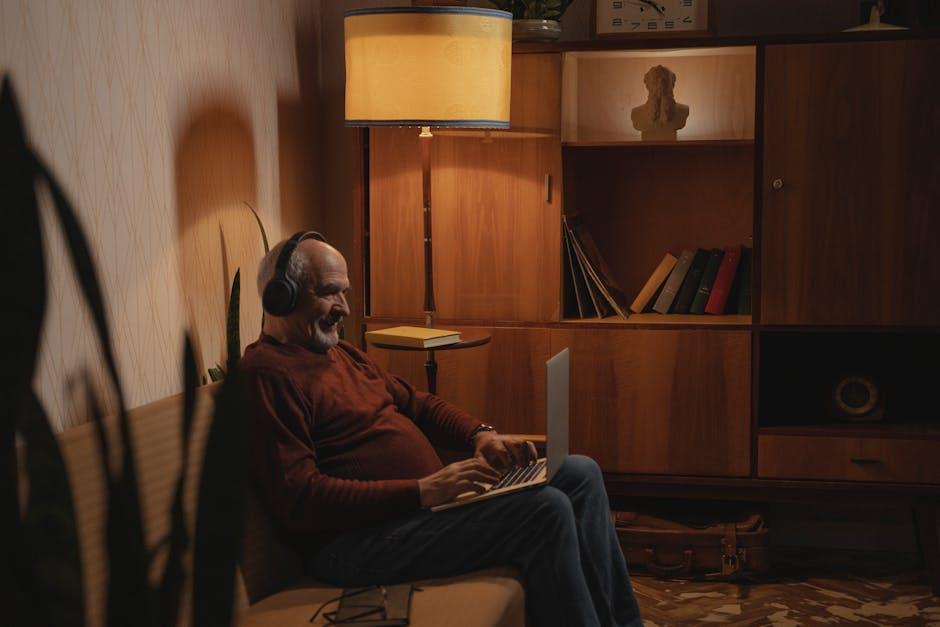In an era where technological advancements are reshaping the landscape of media consumption, the rise of streaming services has been nothing short of revolutionary. As households increasingly pivot from physical media to digital platforms, a pertinent question emerges: Is streaming replacing physical media too quickly? This analytical exploration seeks to unravel the intricacies of this transition, examining both the rapid pace of change and the potential implications for consumers and the industry alike. While some may lament the perceived decline of physical formats, this shift heralds an exciting new chapter in media accessibility and convenience. By delving into the dynamics driving this transformation, we can better appreciate the benefits streaming offers, while also acknowledging the enduring value of physical media in an ever-evolving digital world.
The Shift from Discs to Digital Understanding Consumer Preferences in Media Consumption
The evolution from physical discs to digital formats in media consumption is reshaping how we engage with entertainment. Consumers today are driven by convenience and accessibility, leading to a significant shift towards streaming platforms. This transition isn’t merely a technological trend but a reflection of evolving consumer preferences. The allure of having vast libraries of movies, music, and games at one’s fingertips—without the clutter of physical media—is hard to resist. Streaming services offer benefits such as instant access, personalized recommendations, and the ability to consume content on multiple devices seamlessly.
- Accessibility: Digital media is accessible anywhere with an internet connection.
- Variety: Streaming platforms provide a vast array of content options.
- Space-saving: No need for physical storage space for discs.
- Environmental impact: Reduction in plastic waste from physical media production.
Despite the rapid adoption of streaming, it’s crucial to acknowledge the enduring appeal of physical media for certain consumers. Collectors and enthusiasts often value the tangible nature and nostalgic charm of discs, along with the superior quality that physical formats can sometimes offer. As we navigate this digital transition, it’s essential to balance innovation with the diverse preferences of media consumers, ensuring that the shift to digital doesn’t overlook the needs of those who still cherish physical formats.
Environmental Impact and Sustainability of Streaming vs. Physical Media
The shift from physical media to streaming services has significantly altered the landscape of media consumption, bringing with it both challenges and opportunities for environmental sustainability. Streaming services, often hailed for their convenience and accessibility, have a distinct environmental footprint that is frequently underestimated. The energy consumption required for data centers, network infrastructure, and personal devices contributes to carbon emissions. However, technological advancements and a push towards renewable energy sources are steadily reducing this impact. Many streaming companies are investing in green energy and optimizing their data centers to be more energy-efficient.
On the other hand, physical media such as CDs, DVDs, and Blu-rays involve tangible materials and manufacturing processes that can be resource-intensive. The production, packaging, and distribution of these items result in significant waste and emissions. Yet, they have a longer lifespan and, when properly recycled, can be less harmful in the long run. Some benefits of physical media include:
- Durability: With proper care, physical media can last for decades, reducing the need for repeated production.
- Recyclability: Materials like plastic and aluminum can be recycled, minimizing landfill waste.
- Tangible Ownership: Consumers have a physical product that can be resold or shared, potentially extending its lifecycle.
Ultimately, the choice between streaming and physical media involves weighing the current environmental impacts and considering the potential for future improvements. As streaming services continue to innovate and adopt more sustainable practices, they may become the more eco-friendly option, but physical media remains a viable choice for those concerned with resource conservation and longevity.

Enhancing Accessibility and Inclusivity through Streaming Services
As the digital revolution continues to unfold, streaming services are making significant strides in promoting accessibility and inclusivity for diverse audiences. Unlike traditional physical media, which often comes with limitations such as geographical restrictions or the need for specialized equipment, streaming platforms offer content that is accessible to a global audience with just an internet connection. This digital shift empowers individuals with disabilities by incorporating closed captions, audio descriptions, and screen reader compatibility as standard features, making content consumption a more inclusive experience.
Moreover, streaming services are breaking cultural and linguistic barriers by providing a vast array of content in multiple languages, complete with subtitles and dubbing options. This ensures that audiences from different backgrounds can enjoy and understand content that was once confined to specific regions. Some platforms even feature customizable interfaces that allow users to adjust settings according to their personal needs, further enhancing the user experience. With these innovative features, streaming services are not just replacing physical media—they are transforming how we think about accessibility and inclusivity in the digital age.

Balancing Speed and Quality: Ensuring a Smooth Transition for All Media Users
In today’s fast-paced digital world, the shift from physical media to streaming services is happening at an unprecedented rate. While this transition offers numerous benefits such as instant access, reduced clutter, and personalized recommendations, it also raises concerns about the impact on quality and user experience. Striking the right balance between speed and quality is crucial to ensure that all users, regardless of their tech-savviness, can enjoy a seamless transition. Streaming platforms need to invest in robust infrastructure to handle the increased demand without compromising on audio and video quality. Moreover, they should prioritize user-friendly interfaces that cater to both tech enthusiasts and those who are more comfortable with traditional media formats.
- Consistent Quality: Ensuring high-definition streaming and minimizing buffering issues.
- Accessible Interfaces: Designing platforms that are intuitive for users of all ages and tech backgrounds.
- Content Diversity: Offering a wide range of genres and titles to cater to varied tastes.
- Offline Access: Providing download options for users with limited internet connectivity.
By addressing these areas, streaming services can provide a smooth transition for users while maintaining the high standards that physical media have set over the years. This approach not only enhances user satisfaction but also fosters a more inclusive digital ecosystem where everyone can enjoy the benefits of modern media consumption.
The Conclusion
while the shift from physical media to streaming services has been rapid and, at times, disorienting, it presents an exciting frontier for the way we consume and appreciate media. This transition is not merely about convenience; it reflects broader technological advancements and evolving consumer preferences. As we embrace this digital evolution, it’s essential to recognize the value that both streaming and physical media bring to the table. Streaming offers unparalleled access and immediacy, while physical media provides tangibility and nostalgia. Rather than viewing this as a zero-sum game, we can appreciate the complementary roles each format plays in enriching our media landscape. By fostering a balance between the old and the new, we can ensure a future where diverse media experiences coexist, catering to all tastes and preferences. As technology continues to evolve, so too will our methods of media consumption, promising a vibrant and inclusive media environment for years to come.







































